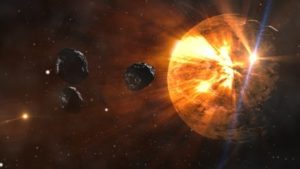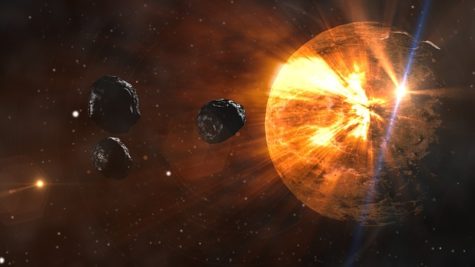Researchers say pieces of comet crashed into Earth, causing devastating fires across globe
LAWRENCE, Kan. — Human beings who survived the ice age some 12,800 years ago and emerged from their shelters to take in the warmer world likely found themselves quickly running back for shelter again as giant fireballs from space pounded the planet, leaving 10 percent of the Earth in flames, a new study finds.
Two dozen researchers, including Adrian Melott, a emeritus professor of physics and astronomy at the University of Kansas, describe how fragments of a comet collided with the Earth and caused widespread devastation.

The authors gathered evidence from more than 170 sites across the world, analyzing pollen from areas affected by the disaster to assess the damage that turned the planet into a raging inferno. The research suggests that the resulting fires were larger than the ones the wiped out the dinosaurs.
“The hypothesis is that a large comet fragmented and the chunks impacted the Earth, causing this disaster,” explains Melott in a university release. “A number of different chemical signatures — carbon dioxide, nitrate, ammonia and others — all seem to indicate that an astonishing 10 percent of the Earth’s land surface, or about 10 million square kilometers, was consumed by fires.”
Melott says that remnants of the comet, estimated to be about 62 miles in diameter, can still be found circling our solar system today.
It’s believed that after the comet’s fragments slammed into the planet, dust from the impact blanketed the sky, blocking out the sun. The climate would then begin to cool off again, and with no resources to survive, plant life died, animals were left with few sources of food, and ocean currents shifted. Glaciers advanced again and another ice age-like climate persisted for an additional thousand years.
While human populations surely dwindled from the fiery collisions, the authors explain that survivors likely encountered a slew of deadly health conditions.
“Computations suggest that the impact would have depleted the ozone layer, causing increases in skin cancer and other negative health effects,” says Melott. “The impact hypothesis is still a hypothesis, but this study provides a massive amount of evidence, which we argue can only be all explained by a major cosmic impact.”
The study, published in the Journal of Geology, was divided into two papers: “Part I: Ice Cores and Glaciers” and “Part 2: Lake, Marine, and Terrestrial Sediments.”

How can they possibly know the fires were larger than at the end of the Cretaceous?